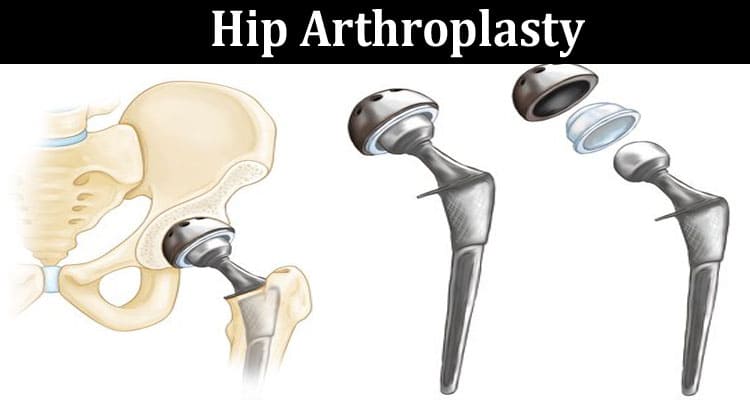It is a hard fact that most of us suffer from arthritis. Generally, it affects and degenerates the bones and their density. When arthritis affects hip bones, people feel excruciating pain. Initially, orthopaedic doctors advise them on non-steroidal painkillers and even steroid injections. If patients fail to respond to the tablets, injections, and other therapies, they will be finally advised to hip arthroplasty also commonly known as hip replacement surgery
What is called hip arthroplasty?
It is otherwise called hip replacement surgery. This is a surgical procedure performed for treating severe form of hip pain. In this surgery, the parts of the hip joint are replaced with artificial implants. The human hip joints are in the form of ball and socket joint. The top of the femur bone is the ball like structure and the hip bone is in the socket form. Together these help in the movement of the hip and human actions like walking, running and supports the body weight.
Due to severe osteoarthritis, or injury these joints may get damaged or get stiff. In such case the need of the surgery arises. In this hip replacement surgery, one may expect the replacement of one or both parts with artificial parts. The objective of the surgery is to resume regular activities and stay with less pain.
Who should have hip arthroplasty?
Most osteoarthritis patients undergo hip replacement surgery due to unbearable pain. Hip fracture, rheumatoid arthritis, hip dysplasia, osteonecrosis, and patients who suffer from tumours in the hip joint are advised to go for it. In hip dysplasia, there will not be proper development of the hip joint.
Each year, many thousands of patients undergo hip replacement surgery to live with reduced pain, improved mobility, and a better quality of life.
Who should not have hip replacement surgery?
There are some factors that might prevent the patients from having surgery, and factors are:
- Chronic urinary infection, infection from the already implanted material, uncontrolled high blood pressure, severe heart disease
Types of hip replacement surgery
The type of hip replacement surgery depends purely upon many factors. When planning for surgery, your doctor will consider the following points:
- Total and partial hip replacement
A patient’s ball and socket are replaced during total hip replacement surgery. In a partial hip replacement, the patient will undergo replacement surgery only for the ball (femur head). In this type of surgery, the surgeon will consider the parts of the replacement.
- Minimally invasive arthroplasty
This procedure totally focuses on minimizing the surgery’s impact on healthy tissues. In a minimally invasive hip replacement, the surgeon makes one or two tiny incisions by moving the muscles to access the hip joint. The advantages of this approach are:
Less muscle damage, less pain, quick recovery, less limping, fewer chances of hip dislocation, and minimal days of hospital stay
Based only on a patient’s age, weight, health, and other factors, arthroplasty is decided, and it will not be for everyone.
- Traditional hip replacement
In traditional arthroplasty, the surgeon will access the hip joint by making a single large incision by a lateral or posterior approach. This procedure is a lengthy one as the surgeon accesses the hip joint by moving some tendons and muscles. Dislocation risk will be high until all new supportive structures in the hip are healed.
So, the patient needs to discuss with his orthopaedic surgeon which type of surgical approach may be the best fit for him.
What are the possible complications of arthroplasty?
After hip replacement surgery, you may expect a low rate of complications. It may be the following:
- Infection: It may occur at the surgical site and will be treated with antibiotics.
- Blood clots: In the leg veins, clots may form after surgery. To avoid this dangerous effect, blood thinning medications will be advised.
- Nerve damage: Rarely, nerves in the implanted area can be injured. It might cause weakness, pain, and numbness.
- Fracture: Some healthy portions of the hip joint might fracture during surgery. Sometimes the fractures may be small and can be self-healed, whereas sometimes the fracture can be large and need stabilization.
When do you need a revision hip replacement surgery?
Very few cases may experience discomfort after some years of the surgery. When probing the cause, it might be a dislocation or injury on the implanted area or any rare cases of infection. Such cases will have to undergo revision hip replacement surgery to replace the damaged parts of the implants. Most cases last up to 20–25 years or longer and patients can minimize the damage to their prostheses by avoiding high-impact exercises. If a patient with a partially replaced hip experiences discomfort, his socket may require replacement.
Takeaway:
The objective of the hip arthroplasty is to enable the patient to move and perform daily activities of walking and body movement without pain. The surgery involves the replacement of the affected part of the bone with supportive artificial part. Recovering from the surgery is time consuming and it requires the patient to adhere to the safety measures as recommended by the surgeon for ensuring proper healing. Modern prosthetics have been developed that last longer than the previous once used in these kinds of surgery but in due course of time there is a need of hip revision surgery. Henceforth, it is recommended to take proper consultation with experts before taking any decision.


